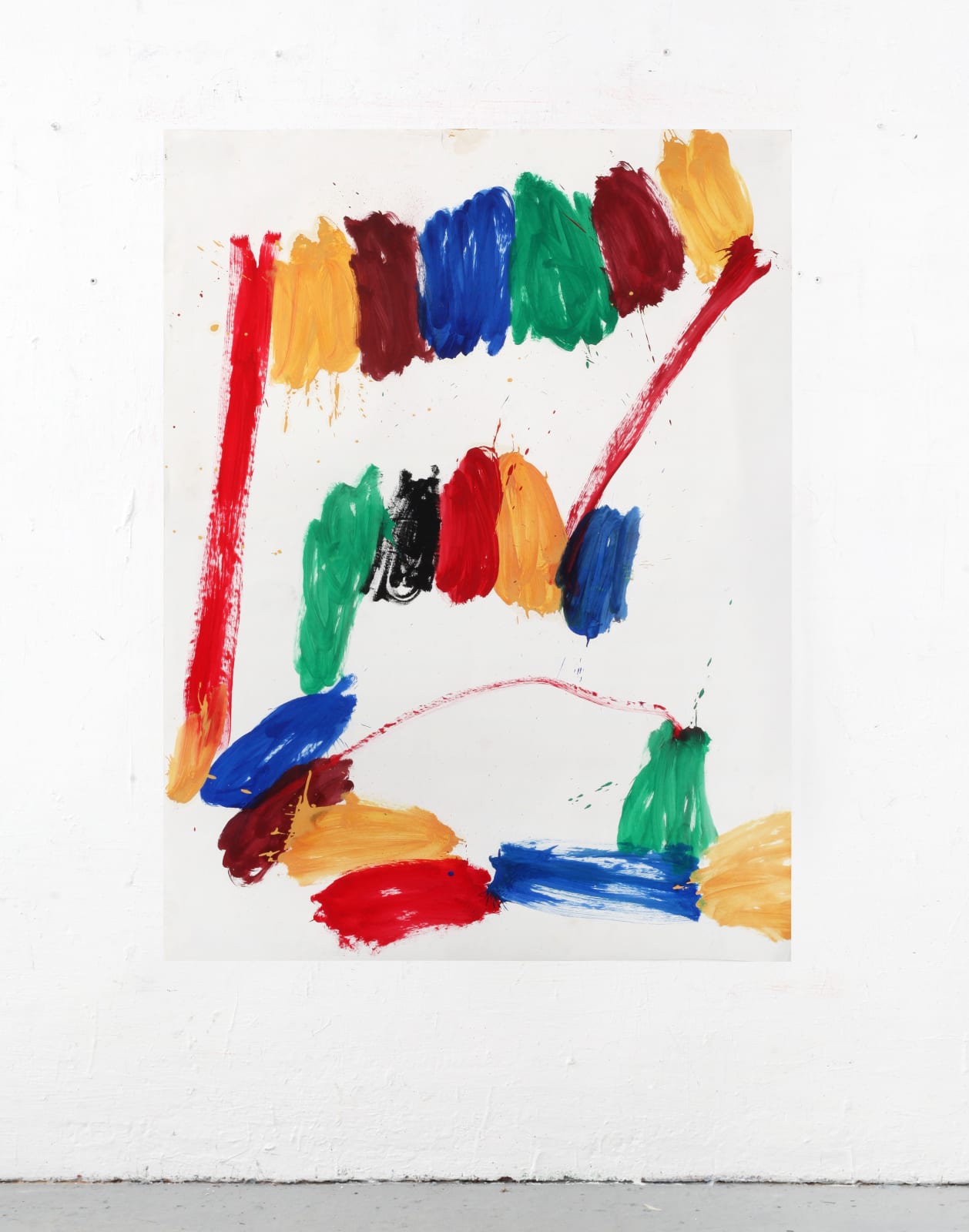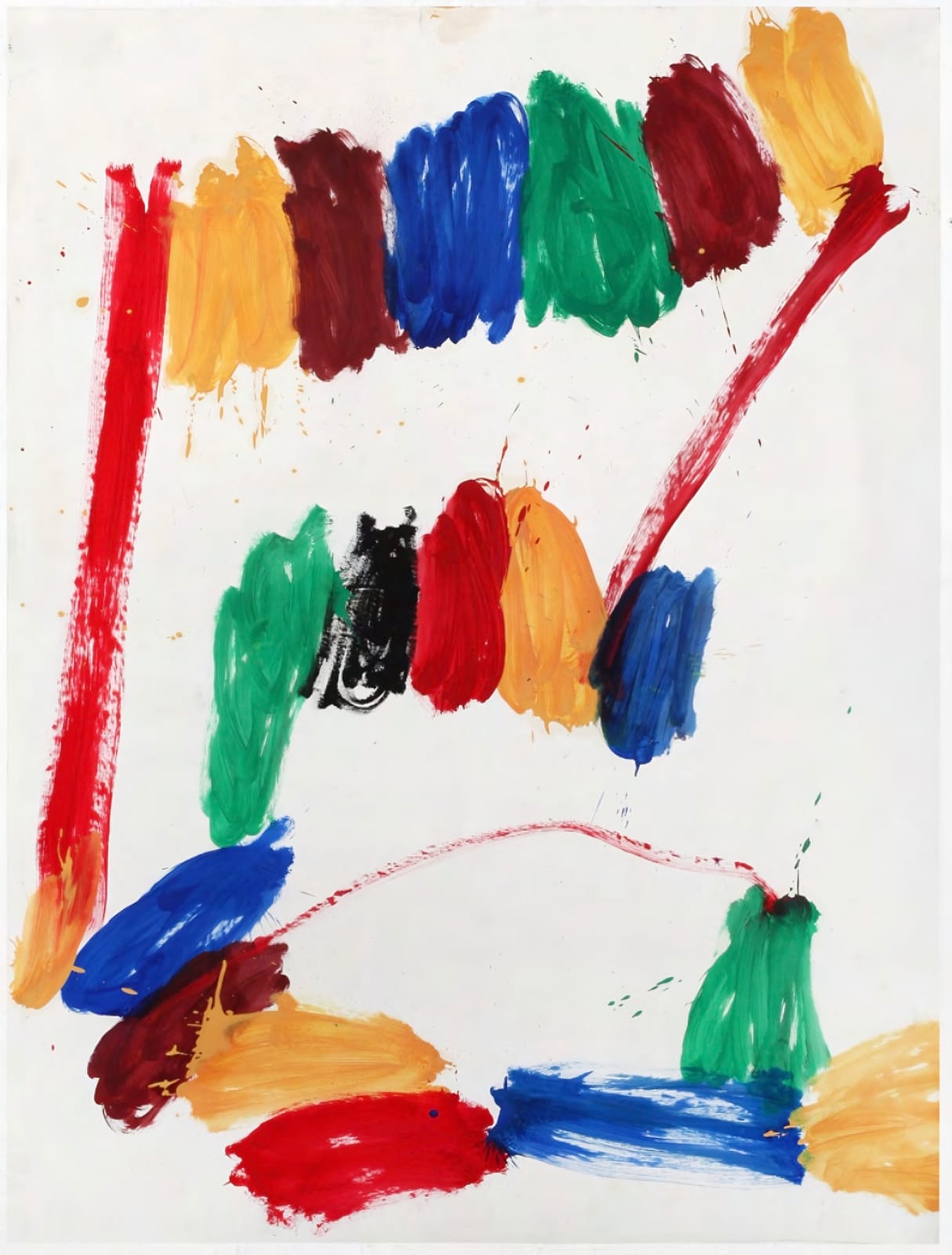-
Nelo Vinuesa
The Clouds of Venus XI, 2024Oil on paper63 x 47 1/4 in (160 x 120 cm)© Nelo Vinuesa. Courtesy of the artist and Zeit Contemporary Art, New York.Nelo Vinuesa’s The Clouds of Venus XI (2024) belongs to a series whose title immediately situates the work within a poetic and mythological register. Venus, the Roman goddess of love,...Nelo Vinuesa’s The Clouds of Venus XI (2024) belongs to a series whose title immediately situates the work within a poetic and mythological register. Venus, the Roman goddess of love, beauty, and generative power, hovers behind the gestural abstraction as both mythic referent and celestial body. In invoking “clouds,” Vinuesa ties the painting to the atmospheric veil of the planet Venus, suggesting both opacity and mystery, while also recalling the divine aura that surrounds the goddess herself. The title pushes the viewer to consider the painted surface as more than a collection of marks: it becomes a theater of myth where color, gesture, and energy enact an allegory of desire and transcendence.
The composition itself is dominated by broad, sweeping strokes of saturated pigment—reds, greens, blues, yellows, and blacks—applied with a raw immediacy. These gestures resist containment, bleeding at the edges, dripping in places, and creating a rhythm that is less about form than about movement. This physicality recalls the turbulent atmosphere of Venus as a planet: toxic clouds swirling, dense and luminous. At the same time, it reflects the emotional turbulence traditionally associated with the goddess—passion, lust, conflict, and beauty intertwined. Vinuesa’s brushwork is never static; it carries within it the dance of celestial storms as well as the bodily rhythms of human longing.
The mythological undertone deepens when considering how these gestures evoke both eruption and embrace. The crimson strokes, particularly the diagonal mark cutting across the upper right, carry the violence of Mars, lover of Venus, while the softer arcs and rounded daubs recall the sensuousness of her myth. Venus is never singular in mythology; she exists in relation to desire, often contested, fought over, pursued. Vinuesa’s abstraction captures this dialectic: his movements oscillate between aggression and tenderness, between assertive strikes of the brush and lush, almost caressing swaths of paint. The painting becomes a field of tension where myth’s eternal dramas are re-enacted in pure chromatic energy.
There is also a cosmological dimension. The clustering of strokes across the surface recalls constellations or planetary alignments, suggesting a choreography beyond human scale. The red arc sweeping across the lower center of the canvas reads like an orbital path—a trace of cosmic order cutting through painterly chaos. In this sense, The Clouds of Venus XI bridges human mythology and astronomical reality, situating love, beauty, and conflict not only in earthly drama but within a larger, cosmic dance. Vinuesa’s abstraction, therefore, resists being read solely as personal expression; it channels the universal.
Ultimately, The Clouds of Venus XI is not a painting of Venus, nor of her clouds, but a painting that embodies their spirit. The gestures, rapid yet resonant, evoke both the immediacy of the artist’s hand and the timelessness of myth. In its layering of sensual color, dynamic movement, and mythological allusion, the work collapses distinctions between body and cosmos, myth and matter, passion and abstraction. Vinuesa offers a contemporary meditation on Venus that feels both ancient and utterly of the present—a clouded surface in which the viewer, too, finds themselves caught between beauty and turbulence.
Provenance
The artist
Zeit Contemporary Art, New York




